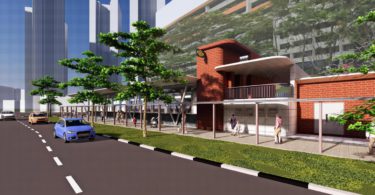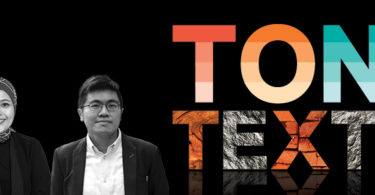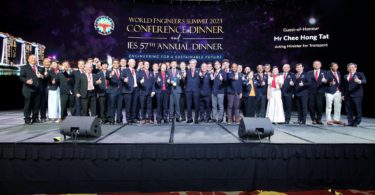Building maintenance is moving from an operation that is traditionally reactive and periodic to one that is proactive and predictive, where defects can be eliminated at an early stage and failure can be predicted to prevent it from happening.
In the International Built Environment Week (IBEW) 2020, on 28 September 2020, the panel discussion focused on Smart Facilities Management (Smart FM) predictive maintenance. Andrew Sim, Head of Cyber, Technology and Information, Keppel Infrastructure Holdings, shared his insights on this matter with Alvin Ng, Vice President of Digital Solutions APAC, Johnson Controls (S) Pte Ltd.
Smart FM is an integration of systems, processes, technologies and personnel to enhance the management of a building’s facilities. It is part of the S$20 million Advanced Digital Solutions (ADS) scheme from the Government of Singapore to fund integrated advanced digital solutions to keep worksites and workers safe.
Read: BCA has committed S$20 million in the built environment sector to adopt digital solutions
Professionals in the FM sector believe that the COVID-19 pandemic has accelerated the adoption of Smart FM. Technology and innovation like this will not only bring about cost savings but also present new opportunity for owners to create new revenue models, but the caveat is, it will bring about disruptions in the system.
KEY SUCCESS FACTORS
Central to smart management is data collection and data analytics to raise productivity and efficiency, reduce labour intensity and enhance FM service delivery. In recent years, building owners who develop smart buildings or estates that cater to varied customers’ experiences have the ability to continuously create new value; those who build on digital economies of scale, thrive.
Sim believes that, although data is important, the key success factor lies in the way we use the data. The basic principle of smart technology is that we want to create the best machine; and with this machine, we want to achieve the maximum performance. Smart FM, therefore, aims not only for the sustainability of the machine, but also the system and eventually the asset or facility.
Sim underlined that aside from the effective, on-target data analytics, what we need is the predictability mindset. Tools are important but at the end of the day, it is the people that is going to drive change. His argument is in line with the BCA’s guide whereby the foundation of Smart FM adoption is clear business objectives and outcomes. Only with these do we get to map out solutions as enablers and adopt a suitable implementation model.
ADOPTION BARRIERS
Technology moves in different maturity levels and so does people’s understanding. Willingness to embrace change also matures on different levels. People may say that they are open to change but this does not necessarily translate into actions of embracing change. This is the first barrier that we need to remove in the adoption of Smart FM.
What COVID-19 has brought about is indeed an opportunity to rethink operations and processes. Old ways may no longer work because we now have to practice the physical distancing, staggered work hours and so on. But even in a ‘normal’ situation, an adoption of a new technology always entails operational challenges. When new plans have been rolled out and a new system is being run, there is always something from the past, things that have been done and yielded returns for the company. In other words, the second challenge in the adoption of Smart FM is the mindset. Breakthrough solutions are needed to make new technologies operationalisable, into an established-but-arguably-ineffective culture.
Sim further emphasised that continuity is the key to harmonise the different levels of maturity, as well as to close the gaps between the old ways and the new (technology). Sharing experiences and learning from other practitioners in the industry is crucial too, because this will always bring new insights and ideas.
THE OUTLOOK
The fundamental principle of building maintenance is how well we can read equipment. If we have the right equipment and the ability to read it, then we are halfway there already. Sensors give us insights to create and build up data. With an advanced digital platform, we can now connect the data that we have built up with other datasets, such as a building historical performance and the disaster risk assessments. With this, predictive maintenance is made possible.
However, the optimisation of Smart FM in the built environment is still in its early stage. The main reason is that because it is not the most critical aspect in a building lifecycle. It only becomes critical now when people’s health is being jeopardised by an unprecedented pandemic. From the comfort and sustainability perspective, this will not be a priority.
The environment decides on how much building owners will be willing to invest. Reliable building maintenance systems are unlikely to be adopted in, for example, shopping malls; but are prospective in critical built environments such as hospitals or offices, because the occupants’ safety, health and productivity might be compromised.– Anisa Pinatih, Construction+ Online
Disclaimer: Construction+ makes reasonable efforts to present accurate and reliable information on this website, but the information is not intended to provide specific advice about individual legal, business, or other matters, and it is not a substitute for readers’ independent research and evaluation of any issue. If specific legal or other expert advice is required or desired, the services of an appropriate, competent professional should be sought. Construction+ makes no representations of any kind and disclaims all expressed, implied, statutory or other warranties of any kind, including, without limitation, any warranties of accuracy and timeliness of the measures and regulations; and the completeness of the projects mentioned in the articles. All measures, regulations and projects are accurate as of the date of publication; for further information, please refer to the sources cited.
Hyperlinks are not endorsements: Construction+ is in the business of promoting the interests of its readers as a whole and does not promote or endorse references to specific products, services or third-party content providers; nor are such links or references any indication that Construction+ has received specific authorisation to provide these links or references. Rather, the links on this website to other sites are provided solely to acknowledge them as content sources and as a convenient resource to readers of Construction+.











